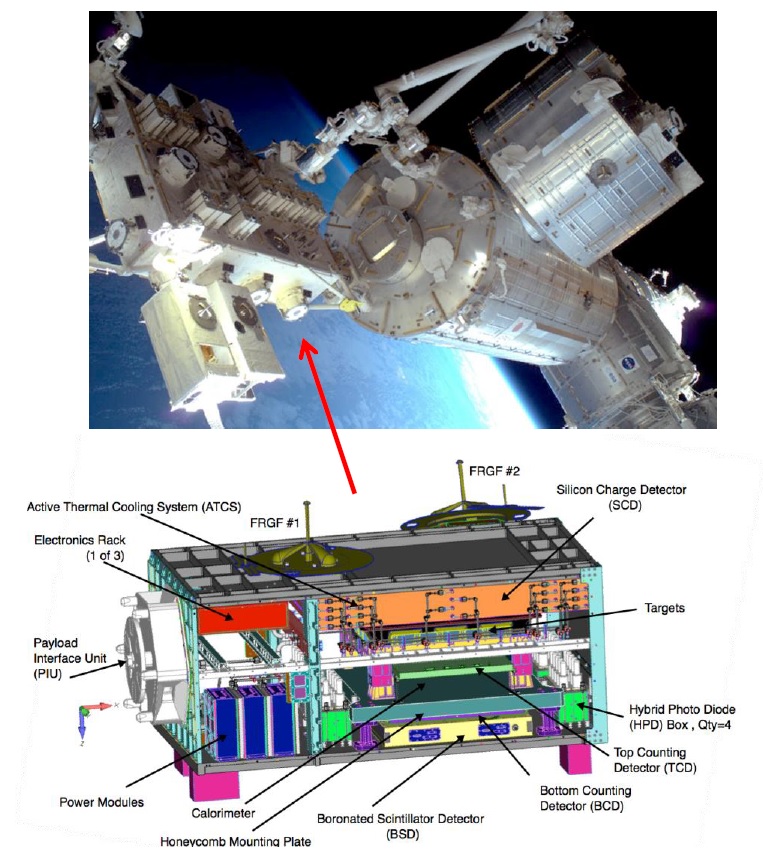
ISS-CREAM for the Space Station
 Credit: ISS-CREAM; NASA; UMd
Credit: ISS-CREAM; NASA; UMd
The origin of cosmic rays has been a mystery since their discovery by Victor Hess more than a century ago. Cosmic rays are broken bits of atoms (electrons, protons, atomic nuclei and other subatomic particles) accelerated to astonishing energies. Some of these tiny particles are so energetic, they pack nearly as much punch as a Stephen Strasburg fastball. Cosmic rays rain down on earth, colliding with the atoms in the earth's atmosphere and producing secondary electrons and muons, hundreds of which pass through your body each second. Some cosmic rays are produced by high-energy explosions on the Sun; others are believed to be associated with supernovae, the enormously powerful explosions of dying stars. Determining the compositions of cosmic rays is a key means to help understand how these weird interstellar travelers are produced. And when it comes to measuring cosmic rays, it helps to study them at high altitude, to detect them before they collide with the atmosphere. Today, a new facility to study cosmic rays is being launched for installation on the International Space Station. This experiment, called ISS-CREAM (commonly pronounced "ice-cream"), is actually a modified version of a balloon-borne experiment called CREAM, which stands for "Cosmic-Ray Energetics And Mass". CREAM has flown on long-duration balloon flights in the upper atmosphere around Antarctica. These balloon flights have provided important information about the composition and origin of cosmic rays, but are necessarily limited in time-of-flight. By mounting ISS-CREAM on the Space Station, observations of cosmic rays will be made nearly continuously for at least three years. These observations will extend the direct measurements of cosmic rays to the highest energy, to help determine the orgins of cosmic rays and to help scientists understand the ways in which they are accelerated and shot into space. ISS-CREAM is scheduled for launch Monday, Aug. 14 at 12:31 p.m. EDT on a SpaceX Dragon Capsule using a Falcon 9 rocket.
Published: August 14, 2017
<
HEA Dictionary ● Archive
● Search HEAPOW
● Other Languages
● HEAPOW on Facebook
● Download all Images
● Education ● HEAD
>

Each week the HEASARC
brings you new, exciting and beautiful images from X-ray and Gamma ray
astronomy. Check back each week and be sure to check out the HEAPOW archive!
Page Author: Dr. Michael F. Corcoran
Last modified Tuesday, 27-Feb-2024 10:13:26 EST


